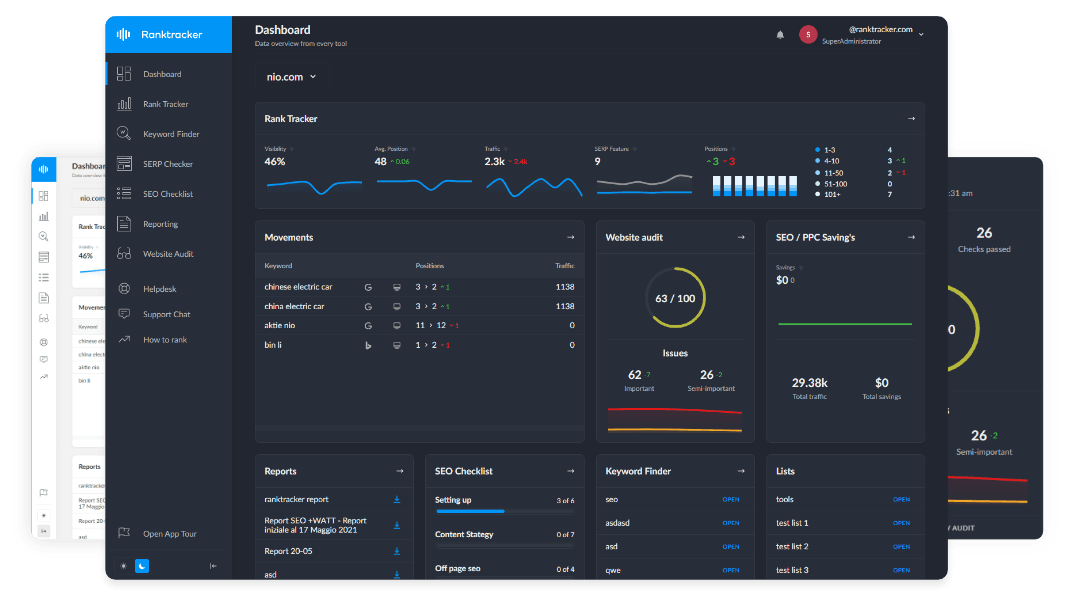Intro
Executing a large web project requires careful planning, effective collaboration, and the ability to adapt when things change. It’s not just about designing and coding; it's about having a clear vision, defined roles, and staying organized through each stage. If you’re partnering with a web outsourcing company, their expertise can make all the difference. Even with the best team, however, a project can quickly become overwhelming without the right strategies. Let’s dive into the key tips and strategies for managing large web projects and ensuring success.
Defining Clear Objectives from the Start
Before diving into development, you need to have a solid understanding of your goals. Clear project objectives help to direct the entire process and keep it on track. They also help to prioritize what needs to be done and prevent scope creep, which can be a major issue for large web projects.
Understand Your Needs
The first step is to know what you want to achieve with your web project. Are you looking to create a new online store? Or maybe a platform to showcase your portfolio? What problem will your website solve for your audience?
For instance, if you’re launching an e-commerce site, you might need an easy-to-navigate interface with secure payment options. Having a deep understanding of your specific needs will guide every decision moving forward.
Collaborate with Your Team
It’s important that you don't go at this alone. Bring together your internal team and the web outsourcing company early in the process to collaborate on the project’s objectives. Sharing your vision and gathering feedback from all parties will ensure everyone is aligned and understands their role in the project. This teamwork will help avoid surprises later on.
Set Realistic Timelines
Setting deadlines is essential, but so is being realistic about how much time each stage of the project will take. Large projects often involve multiple phases, such as design, development, testing, and deployment, each requiring significant time and effort.
It's better to set a more achievable timeline than to rush through phases and risk quality. Make sure the schedule includes buffer time for unexpected delays, and communicate with your outsourcing team about their own timelines.
Prioritize Features
It’s easy to get carried away and want every feature under the sun, but not all features are equally important. A large project often involves hundreds of possible features, but the key is to determine what features are essential for your launch.
Features like responsive design, user login, and easy navigation may take priority over less critical ones. Work with your outsourcing team to break down what’s a “must-have” versus a “nice-to-have,” so you can focus on the essentials first.
Budget Wisely
Big projects can quickly get expensive. Planning your budget in advance and sticking to it is crucial. Factor in design, development, testing, and future updates. Budgeting for ongoing maintenance and improvements is also important, as websites need constant care after launch. Make sure to allocate a portion of your budget for unforeseen costs, especially if the scope of the project changes during development.
Choosing the Right Web Outsourcing Company
Selecting the right web outsourcing company is crucial for the success of your project. A great partner not only brings technical expertise but also understands your business goals, becoming a true collaborator throughout the development process.
Start by reviewing the company’s portfolio. Check if they’ve worked on projects similar to yours, particularly if you have specific requirements like an e-commerce website or a custom platform. A strong portfolio demonstrates their ability to tackle complex tasks and deliver high-quality results.
Reading reviews and testimonials from past clients is also essential. Positive feedback indicates the company’s reliability in meeting deadlines and staying within budget. It’s a good way to assess the company’s professionalism, as well as the quality of their communication and customer support.
The All-in-One Platform for Effective SEO
Behind every successful business is a strong SEO campaign. But with countless optimization tools and techniques out there to choose from, it can be hard to know where to start. Well, fear no more, cause I've got just the thing to help. Presenting the Ranktracker all-in-one platform for effective SEO
We have finally opened registration to Ranktracker absolutely free!
Create a free accountOr Sign in using your credentials
A good outsourcing partner should also be up to date with the latest web technologies. From front-end design to back-end development, ensure they have experience with modern tools and frameworks like responsive design, APIs, and cloud services. This expertise will help them meet the specific needs of your project.
Finally, choose a company that understands your target market. Whether you’re in retail, healthcare, or another industry, a partner who is familiar with your audience can offer valuable insights and help tailor your website to better serve your users. Their industry knowledge can also provide a competitive edge in terms of design, features, and overall strategy.
Project Management and Collaboration Tools
Managing a large web project requires the right tools to stay organized and meet deadlines effectively. Here are some key strategies to ensure smooth project management:
-
Use Project Management Software: Tools like Trello, Jira, or Asana break down the project into manageable tasks. These platforms allow you to assign responsibilities, set deadlines, and track progress, ensuring that everyone stays on the same page.
-
Centralized Communication: Instead of using email chains, centralize communication through platforms like Slack or Microsoft Teams. This helps keep discussions organized and ensures important updates and feedback are easily accessible.
-
Keep Track of Deliverables: Set clear milestones and deliverables for each stage of the project. For example, after the design phase, review mockups, and after development, ensure you receive a working prototype. Regularly check that these deliverables align with your expectations before moving forward.
-
Monitor Progress Regularly: Schedule regular check-ins, whether weekly or daily, to review completed tasks and address any roadblocks. This helps keep the project on track and allows you to make quick adjustments when needed.
-
Be Ready to Adapt: Stay flexible, as changes and unforeseen challenges may arise during the project. Collaborating closely with your outsourcing partner and adapting as necessary will help you achieve the best possible outcome.
Using these tools and strategies will streamline communication, minimize delays, and help ensure that the project runs smoothly from start to finish. A structured approach with regular monitoring and adaptability will set you up for success, making it easier to manage large web projects and deliver a high-quality result.
Testing and Quality Assurance
Quality is paramount when executing a large web project. Testing throughout the process ensures that the final product is functional and user-friendly.
-
Develop a Testing Plan Early On: Before diving into development, plan your testing strategy. Will you use automated testing tools, or will you rely on manual testing? Deciding this early will ensure there’s enough time and resources dedicated to ensuring the project’s quality.
-
Test on Multiple Devices: Your users will access your site from different devices – desktops, tablets, smartphones – so it’s crucial to ensure your website is fully responsive. Testing on multiple platforms helps identify issues early and ensures that users have a smooth experience, regardless of their device.
-
Test for Speed and Performance: No one likes slow websites. Speed is an important factor for user experience and SEO. Make sure your site is optimized to load quickly by conducting regular performance tests and addressing any bottlenecks in the code or design.
-
Ensure Security: Security is a top priority when developing a web project, especially if your site will handle sensitive data. Regularly test for vulnerabilities to ensure the site is protected from potential cyber threats.
-
User Testing: Get feedback from real users to identify potential issues with navigation or functionality. User testing helps ensure that your site will be intuitive and user-friendly once it��’s launched.
By integrating thorough testing at every stage of development, you ensure your website is high-performing, secure, and user-friendly, while early identification of issues helps prevent costly mistakes later on.
Conclusion
Executing a large web project requires careful planning, collaboration, and ongoing effort. Whether you’re working with a web outsourcing company or managing the project internally, following these strategies can help ensure that your project is successful. Keep your objectives clear, stay organized, and always focus on quality to create a website that exceeds expectations.

